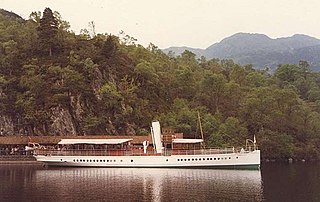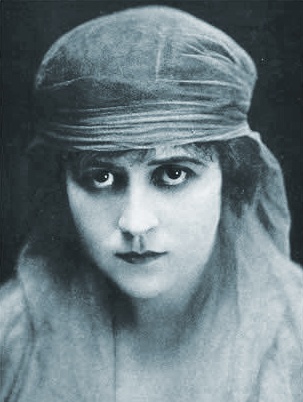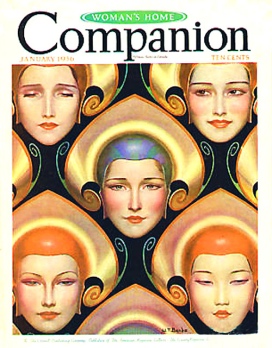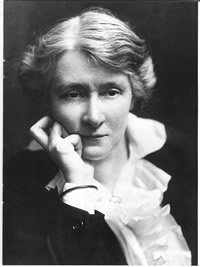
Ava Lavinia Gardner was an American actress. She first signed a contract with Metro-Goldwyn-Mayer in 1941 and appeared mainly in small roles until she drew critics' attention in 1946 with her performance in Robert Siodmak's film noir The Killers. She was nominated for an Academy Award for Best Actress for her performance in John Ford's Mogambo (1953), and for best actress for both a Golden Globe Award and BAFTA Award for her performance in John Huston's The Night of the Iguana (1964). She was a part of the Golden Age of Hollywood.

Dame Daphne du Maurier, Lady Browning, was an English novelist, biographer and playwright. Her parents were actor-manager Sir Gerald du Maurier and his wife, actress Muriel Beaumont. Her grandfather George du Maurier was a writer and cartoonist.

Martha Ellen Scott was an American actress. She was featured in major films such as Cecil B. DeMille's The Ten Commandments (1956), and William Wyler's Ben-Hur (1959), playing the mother of Charlton Heston's character in both films. She originated the role of Emily Webb in Thornton Wilder's Our Town on Broadway in 1938 and later recreated the role in the 1940 film version, for which she was nominated for the Academy Award for Best Actress.

Dame Alice Ellen Terry was a leading English actress of the late 19th and early 20th centuries.

SS Sir Walter Scott is a small steamship that has provided pleasure cruises and a ferry service on Loch Katrine in the scenic Trossachs of Scotland for more than a century, and is the only surviving screw steamer in regular passenger service in Scotland. She is named after the writer Walter Scott, who set his 1810 poem Lady of the Lake, and his 1818 novel Rob Roy around Loch Katrine.

Lois Ruth Maxwell was a Canadian actress. She was best known for portraying Miss Moneypenny in the first 14 Eon-produced James Bond films (1962–85), from Dr. No in 1962 to A View to a Kill in 1985.

Virginia Mayo was an American actress and dancer. She was in a series of popular comedy films with Danny Kaye and was Warner Bros.' biggest box-office draw in the late 1940s. She also co-starred in the 1946 Oscar-winning movie The Best Years of Our Lives.
The Callander and Oban Railway company was established with the intention of linking the sea port of Oban to the railway network. This involved a long line from Callander through wild and thinly populated terrain, and shortage of money meant that the line was opened in stages from 1866 to 1880.

Marie Windsor was an American actress known for her femme fatale characters in the classic film noir features Force of Evil, The Narrow Margin and The Killing. Windsor's height created problems for her in scenes with all but the tallest actors. She was the female lead in so many B movies that she became dubbed the "Queen" of the genre.

Leah Baird was an American actress and screenwriter.

Dayle Haddon was a Canadian model and actress, known for promoting anti-aging products manufactured by L'Oréal. Additionally, she was credited as the author of Ageless Beauty: A Woman's Guide to Lifelong Beauty and Well-Being. During the earlier part of her career as a model, Haddon appeared on the covers of many top fashion and beauty magazines, as well as the cover of the Sports Illustrated Swimsuit Issue in 1973. Haddon also served as a wellness contributor to CBS News where she appeared regularly on The Early Show at the turn of the 21st century. Haddon married French businessman Glenn Souham, who was murdered because of his believed connections to the Iran-Contra affair. They had one daughter, journalist and producer Ryan Haddon. Haddon died at her daughter's property due to carbon monoxide poisoning in December 2024.

The Talented Mr. Ripley is a 1955 psychological thriller novel by Patricia Highsmith. The novel introduced the character of con man Tom Ripley, whom Highsmith wrote about in four subsequent books. Its numerous film and television adaptations include Purple Noon (1960), starring Alain Delon, The Talented Mr. Ripley (1999), starring Matt Damon, and the 2024 series Ripley, starring Andrew Scott.

Elsa Maxwell was an American gossip columnist and author, songwriter, screenwriter, radio personality and professional hostess renowned for her parties for royalty and high society figures of her day.

Helen Menken was an American stage actress.

The Yearling is a novel by American writer Marjorie Kinnan Rawlings, published in March 1938. It was the main selection of the Book of the Month Club in April 1938. It won the 1939 Pulitzer Prize for the Novel.

Teresa Maxwell-Conover was an American actress in Broadway productions in the early 20th century. She was in motion pictures until the early 1940s, and was sometimes credited as Theresa Maxwell Conover. She was from Louisville, Kentucky.

Woman's Home Companion was an American monthly magazine, published from 1873 to 1957. It was highly successful, climbing to a circulation peak of more than four million during the 1930s and 1940s. The magazine, headquartered in Springfield, Ohio, was discontinued in 1957.

Edith Ailsa Geraldine Craig, known as Edy Craig, was a prolific theatre director, producer, costume designer and early pioneer of the women's suffrage movement in England. She was the daughter of actress Ellen Terry and the progressive English architect-designer Edward William Godwin, and the sister of theatre practitioner Edward Gordon Craig.

Sylvia Froos, sometimes spelled as Sylvia Fross, was an American actress and singer who appeared on stage, radio, recordings, television, and film during the 1920s through the 1940s. She was a child star that was sometimes billed as Baby Sylvia and as the "Little Princess of Song" and in the UK as "America's Queen of Song". She was also referred to as "The Miniature Belle Baker", with her ability to mimic the vocal performances of celebrities being particularly noted by the media, and was additionally likened to Sophie Tucker and Marion Harris.

Zita Moulton, also known as Zita Gordon, was an American model and actress who appeared in theatre and film in the 1920s and 30s. She was featured in fashion photographs throughout the period and performed in Duffy stage productions.



















